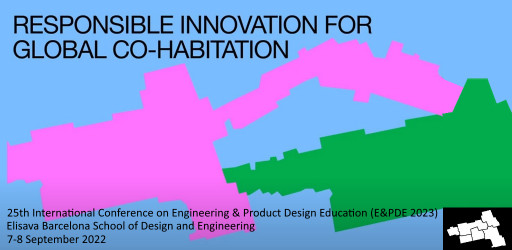Type:
Year:
2023
Editor:
Buck, Lyndon; Grierson, Hilary; Bohemia, Erik
Author:
Series:
E&PDE
Institution:
Institut Superieur de Design, Rubika, Valenciennes, France; UNIMES, Université de Nîmes, Nîmes, France; ENSAAMA, Paris, France
Section:
Responsible innovation in design and engineering education
DOI number:
ISBN:
978-1-912254-19-4
Abstract:
Names used to describe the people our design projects are intended for are both stabilised and questionable. Human-Centred and User-Centred approaches are still at the core of design activity, but should we be talking about humans and users? These terms originated over thirty years ago in design methodology, but are still default terms in much of design methodology and teaching. Equally while UX/UI are commonly used abbreviations, some companies have dropped the notion of “user” experience design, to return to the term ‘product design’. Predating ‘users’, in the 1950s Henry Dreyfuss used the term ‘people’ for those he was designing for, and ‘people’ may be returning for want of a better alternative. Designers today understand that their methodology can be applied to ever-wider problems, therefore it seems relevant to continue to question which words should be used to refer to the ‘people' who are at the centre of design’s focus. While a wide range of possible words exist in English, from users to actors, adopters, customers, stake-holders, participants and beneficiaries, to name but a few, each one can potentially influence and perhaps limit the way these people are considered, perceived and are present in a design process. Equally these different terms relate to different levels of participation by the people concerned by the design project, whereas today’s design process (particularly in all strands of design for sustainability) requires a social focus, giving a much more central role to the people concerned by design interventions. This paper discusses chronologies of accepted terminology for different people involved in design processes and highlights recent evolutions and debates around certain words. Factors that may lead to the emergence or replacement of certain terms are explored (for example: perceived links to aspects of methodology that may no longer be seen as contemporary, or inversely to emerging strands of methodology). In the context of increasingly multi-disciplinary approaches addressing today's complex problems, it is also relevant to question which terms can be shared (and readily understood) in domains beyond design. Equally while design may tend to adopt English language terminology, there are clearly valuable insights that can be gained from terminology used in other languages. Based on a literature review but also on interviews with designers, design students and design educators of different nationalities and specialisations we highlight the terminology most commonly used and also the parts of the terminology that appear to generate problems. While it would not be possible to be exhaustive in the exploration of terminology beyond the English language, we discuss certain examples that appear to be valuable. The aim of this discussion paper is to confront ambiguities, and encourage considering the most relevant terms for more respectful, responsible language use in our evolving design process. Questioning the most relevant ways of (re)naming the people at the heart of design methodology has important ethical implications and is particularly relevant in the context of design education, influencing the status given to people involved in future design activity.
Keywords:





